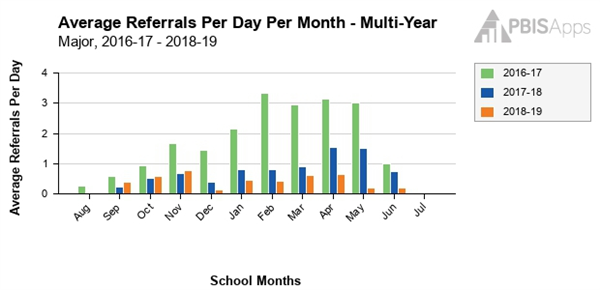- Anne Arundel County Public Schools
- Rippling Woods Elementary - Challenges to Student Success
-
School Renovation Details - N/A We are an open-spaced school with no permanent walls. Nothing has been done to significantly renovate our school at this time.
DEMOGRAPHICS YEAR SCHOOL OPENED 1974 ATTENDANCE RATE (%) 94.8 student Enrollment 655 Race/Ethnicity (%) African American....................... 38.3 Hawaii/Pac. Islander.......................... - White.............................. 35.0 Multiracial...................... 5.8 Hispanic......................... 16.3 American Indian/AK....................... - Asian.............................. 4.3 GENDER (%) Male................................ 51.6 Female........................... 48.4 Special Services** (%) FARMS........................... 58.1 504.................................. 2.5 Special Ed..................... 9.4 LEP................................. 10.7 Title 1............................. Yes
Rippling Woods Elementary School
Key Challenges to Student Success
-
The students who attend Rippling Woods Elementary School are influenced daily by events, situations, and circumstances that occur at home and in their neighborhood. While there are numerous factors that contribute to student achievement at Rippling Woods Elementary, the school leadership team has narrowed its focus to the following challenges to student success, with the acknowledgement that this is not an all-inclusive list and that some students may be affected by other opportunities or issues in their young lives.
This school's key challenges to student success are also noted in the boxes shown below.
Challenges to Student Success
-
Traditional MSDE and/or school-based student challenges
- Discipline Rates,
- Numbers of FARMS students,
- Special Education student enrollment ,
- Title I Status ,
- Student Mobility Rate ,
- PARCC Scores - Mathematics (Elementary grades 3, 4, 5) ,
- PARCC Scores - English/Language Arts (Elementary grades 3, 4, 5)
Key Challenge #1: Discipline Rates
To ensure academic success, student behaviors must align with our vision at Rippling Woods Elementary. The FISH! Philosophy encompasses who we are: “Be There, Play, Make Their Day, Choose Your Attitude”. These four components are felt from the second you walk into our school because of our secretaries and continues down the hall because all school stakeholders (administrators, teachers, support staff, lunch staff, custodial team, and students) believe in our vision. This philosophy, along with an amazing PBIS framework (class incentives, school-wide monthly incentives, spirit sticks, positive referrals, PD’s on specific student behaviors, student mentors, Gentlemen’s Academy, etc.) has shifted our culture and has made a dramatic difference in student discipline rates. Proof is in the numbers! The following are major office referrals for the last three years:
# Discipline Referrals
2016-2017
376
2017-2018
149
2018-2019
88

A reduction in major office referrals means there are less disruptive behaviors in the classroom, which leads to more student engagement and high quality, purposeful instruction. Students are in the classroom at a higher rate because teachers are equipped with specific behavioral strategies (avoiding power struggles, how to approach students dealing with trauma) and know the expectations of classroom vs. office discipline. (Indicators 2,5,6)
Key Challenge #2: FARMS
Close to 60% of our students qualify for Free And Reduced Meals. We currently qualify as a Title 1 Targeted School (based on socio-economic needs), as well as an EOC (Equitable Opportunities for Children) school with a Reading focus. Looking at data pertaining to Attendance, Discipline, Grade Expected Reading Levels, a gap exists between our FARMS/non-FARMS students (Indicator 5). In order to address these challenges:
- Working with families: The School Counselor, Social Worker, PPW and Administration work together to understand the importance of daily attendance. We hold meetings monthly to determine next steps.
- Supporting students: Ensure students are receiving additional support in reading through Title 1 services, reading Interventions, etc.
- Building Relationships: Although there has been a significant decrease in major office referrals, we continue to work with Learning Lab, Behavior Intervention Specialists, Administrators, Teachers & Staff on the continued importance of building relationships.
-
Non-Traditional Socio-Economic Challenges
- Socio-Economic Issues (employment, income levels, housing costs)
- Student Mobility
- Access to transportation
- Limited English proficiency for students and/or families
- Families in Crisis (mental, physical emotional, financial)
- Access to healthcare
- Inclusion of Support Staff
-
HISTORICAL SCHOOL & COMMUNITY CHALLENGES THAT HAVE INFLUENCED THE WRITING OF THIS SCHOOL'S STORY
- Socio-economic community issues (employment, income levels, housing costs) Significant changes over time in student/community demographics
- Access (or lack of access) to community academic support programs
- Significant increase/reduction in student enrollment numbers
-
Faces of AACPS - Stories of Success
Strategic Indicators Chosen by Rippling Woods Elementary School
Progress we are making on our strategic plan indicators

